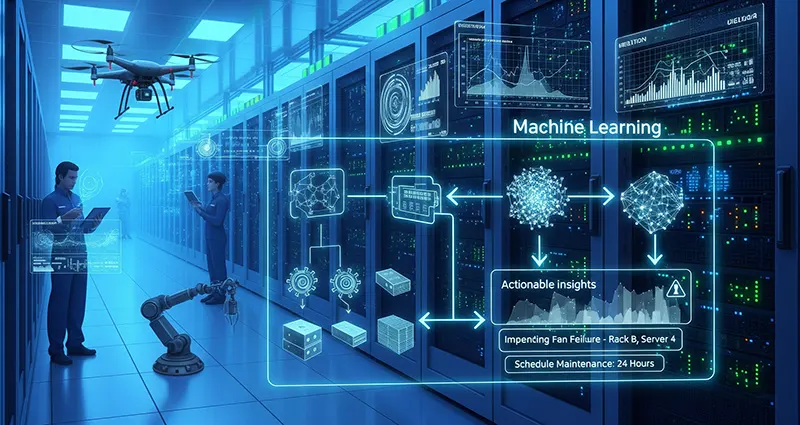In today’s digital age, large-scale data centers are the backbone of countless services, from cloud computing to streaming platforms. Ensuring their smooth operation is crucial, as downtime can result in significant financial losses and customer dissatisfaction. One of the most effective ways to maintain these complex infrastructures is through predictive maintenance powered by machine learning.
What is Predictive Maintenance?
Predictive maintenance involves forecasting equipment failures before they happen, allowing for proactive repairs instead of reactive fixes. This approach minimizes unexpected downtime, reduces maintenance costs, and extends the lifecycle of critical assets.
Why Machine Learning is a Game Changer
Traditional maintenance strategies often rely on scheduled checks or reactive approaches, which can be inefficient and costly. Machine learning (ML), on the other hand, leverages vast amounts of operational data to identify patterns and anomalies that human operators might miss. This enables more accurate predictions about when and where failures might occur.
Applications in Large-Scale Data Centers
- Equipment Monitoring
Data centers host thousands of servers, cooling units, power supplies, and networking devices. Sensors continuously collect data on temperature, CPU usage, power consumption, vibration, and more. ML models analyze this multi-dimensional data to detect early signs of wear or malfunction. - Anomaly Detection
Unusual patterns such as spikes in power usage or temperature can indicate potential hardware faults. Machine learning algorithms trained on historical data can differentiate between normal fluctuations and genuine issues, triggering alerts for preventive actions. - Optimizing Maintenance Schedules
By predicting the remaining useful life (RUL) of components, data center operators can schedule maintenance activities more effectively, avoiding unnecessary interventions and focusing resources where they are most needed. - Energy Efficiency Improvements
Predictive maintenance also contributes to energy management by identifying failing cooling or power systems that might lead to inefficiencies, thereby supporting sustainability goals.
Challenges and Considerations
- Data Quality and Volume
Successful machine learning models require high-quality, labeled data. Data centers must invest in robust sensor networks and data infrastructure. - Model Selection and Training
Choosing the right algorithms, such as neural networks, decision trees, or support vector machines, and ensuring they are trained with relevant data is critical for accuracy. - Integration with Existing Systems
The ML-based predictive maintenance system should seamlessly integrate with current monitoring and alerting frameworks to enable timely response. - Scalability
Large data centers generate massive streams of data. Scalable machine learning solutions, often cloud-based, are necessary to handle this volume in real-time.
Future Outlook
Advancements in machine learning, including deep learning and reinforcement learning, promise even more sophisticated predictive maintenance capabilities. Integration with IoT devices and smarter automation systems will further enhance data center reliability and efficiency.
Using machine learning for predictive maintenance in large-scale data centers offers a proactive approach to managing critical infrastructure. By harnessing data-driven insights, data centers can reduce downtime, optimize maintenance efforts, and improve overall performance. As the technology continues to evolve, embracing ML-based predictive maintenance will become increasingly essential for the sustainable operation of data centers worldwide.











